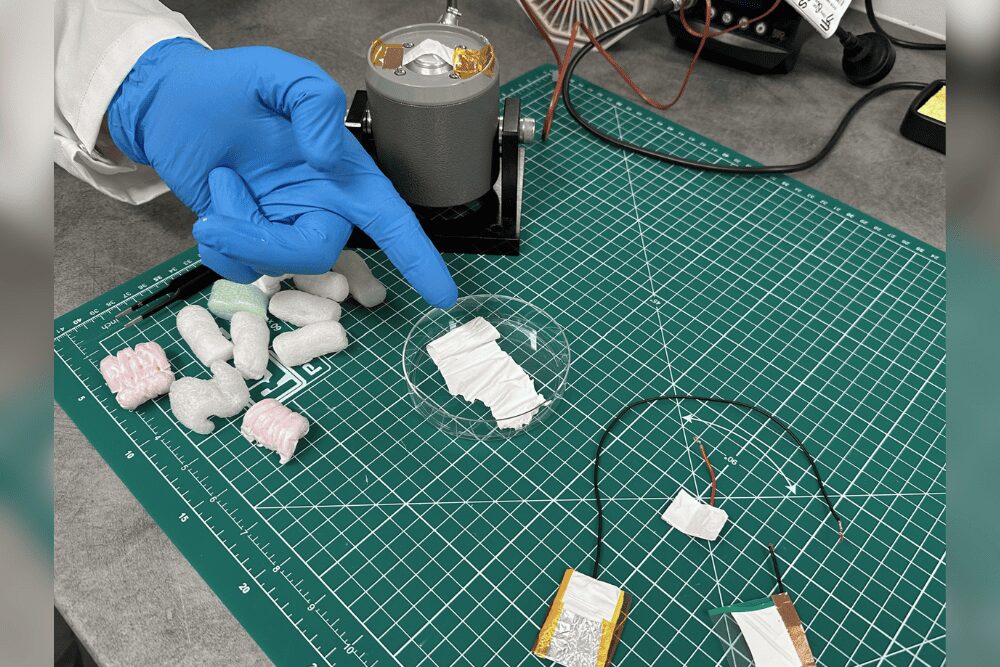
Researchers at RMIT University, in collaboration with Latvia’s Riga Technical University, have unveiled an innovative device that generates static electricity from recycled polystyrene waste.
This invention has the potential to significantly reduce energy consumption in air conditioning systems and other applications.
The device, made from thin patches of layered polystyrene, each about one-tenth the thickness of a human hair, can produce static electricity from motion and wind.
Dr Peter Sherrell, the lead researcher from RMIT’s School of Science, explained that the technology could harness energy from the turbulent exhaust of air conditioning units, potentially reducing their energy demand by up to 5 per cent.
“We can produce this static electricity just from air blowing on the surface of our clever patches, then harvest that energy,” Dr Sherrell stated.
The invention has demonstrated the ability to generate voltages of up to 230 volts in experiments, comparable to household mains voltage, albeit at lower power.
This innovation addresses two significant environmental challenges: energy consumption and polystyrene waste management.
With over 25 million tonnes of single-use polystyrene produced annually and only a fraction recycled, this invention offers a promising solution for repurposing this material.
The durability of polystyrene, which typically takes 500 years to break down in landfills, ensures that these devices can generate electricity for extended periods.
This characteristic makes the invention particularly suitable for long-term energy production applications.
RMIT has filed a provisional patent for the device and is actively seeking industry partners to aid in its commercial development.
The technology’s potential extends beyond air conditioning systems, with possible applications in high-traffic areas like underground walkways, where it could supplement local energy supply without additional strain on the grid.
The research team is also exploring the use of other single-use plastics to create similar energy-generating patches, potentially broadening the range of sustainable applications.
This invention represents a significant advancement in understanding static electricity at the nanoscale.
Dr Sherrell explained: “We’ve figured out how to make the insides of reformed polystyrene rub across each other in a controlled way, making all the charge pull in the same direction to produce electricity.”
The research underpinning this static electricity invention has been published in the journal Advanced Energy and Sustainability Research, marking a crucial step forward in the practical application of this long-observed phenomenon.
As the world continues to grapple with energy efficiency and waste management challenges, innovations like RMIT’s static electricity generator offer promising solutions that could contribute to a more sustainable future.






